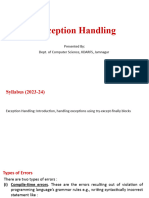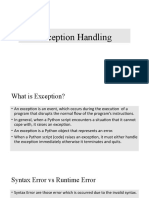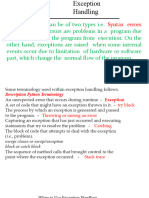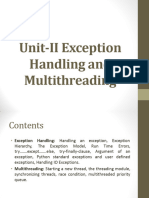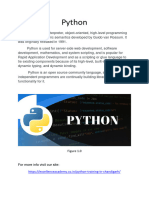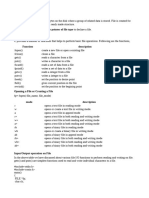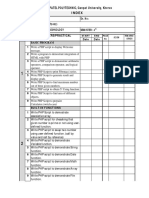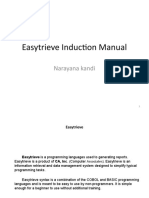0% found this document useful (0 votes)
10 views20 pagesException Handling
The document discusses error handling in Python, categorizing errors into syntax errors, run-time errors, and logical errors. It explains the concept of exceptions, which are errors that occur during program execution, and outlines the mechanism of exception handling, including important terms like traceback, try block, and except block. Additionally, it describes various methods for handling exceptions in Python, such as using try...except blocks and the finally clause.
Uploaded by
brucenair2006.9.3Copyright
© © All Rights Reserved
We take content rights seriously. If you suspect this is your content, claim it here.
Available Formats
Download as PDF, TXT or read online on Scribd
0% found this document useful (0 votes)
10 views20 pagesException Handling
The document discusses error handling in Python, categorizing errors into syntax errors, run-time errors, and logical errors. It explains the concept of exceptions, which are errors that occur during program execution, and outlines the mechanism of exception handling, including important terms like traceback, try block, and except block. Additionally, it describes various methods for handling exceptions in Python, such as using try...except blocks and the finally clause.
Uploaded by
brucenair2006.9.3Copyright
© © All Rights Reserved
We take content rights seriously. If you suspect this is your content, claim it here.
Available Formats
Download as PDF, TXT or read online on Scribd
/ 20










